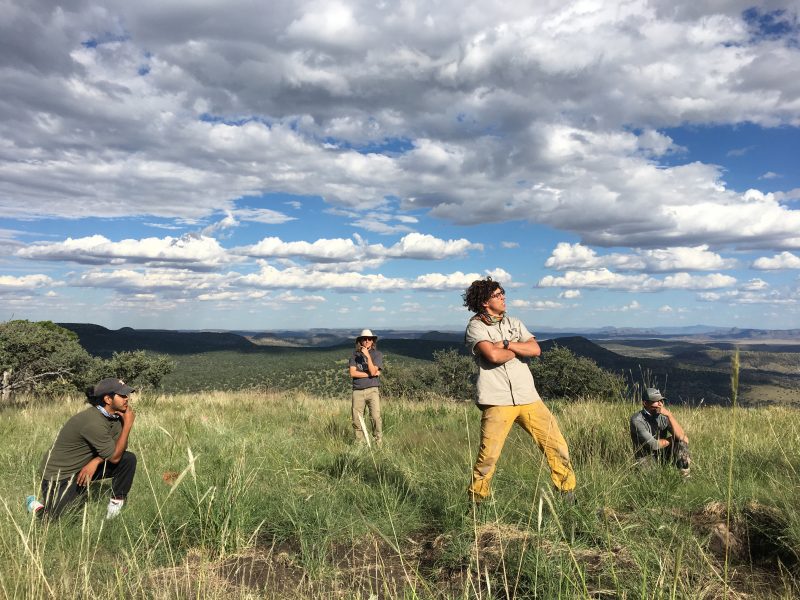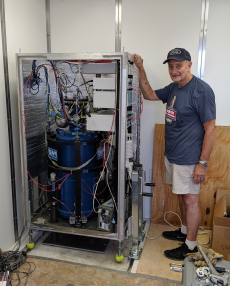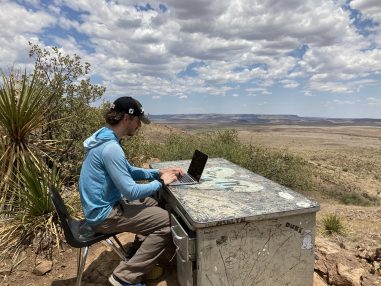Hydro in the Wild West
November 12, 2020

At The University of Texas at Austin’s McDonald Observatory, high up in the Davis Mountains of West Texas, a team of Jackson Schoolers led by professors Clark Wilson and Daniella Rempe has been studying groundwater. Since 2018, they have been building a network of instruments — a mountaintop hydrologic observatory of sorts — to monitor water storage in the region’s volcanic soils and rocks. But their work has a slight twist: They are employing a unique geophysical tool called a superconducting gravity meter.

During 10 trips spanning the past two years, Wilson, Rempe and their team have outfitted a mountaintop at McDonald Observatory with a variety of hydrologic tools. Among them are soil moisture probes, piezometers, boreholes, a meteorological station, and notably a superconducting gravity meter. The gravity meter, which they deployed in September 2019, is one of only 75 such sensors in the world. It measures how moving environmental masses, such as water and atmospheric gases, ever so slightly change Earth’s gravity.
Wilson, Rempe and their team are applying these data to problems in both hydrology and in geodesy. Their hydrologic objective is to monitor and model components of the water cycle, a task that is complicated by the heterogeneous volcanic subsurface. Preliminary data indicate that during the recent dry season, McDonald lost approximately a 20-centimeter layer of groundwater.
The team is also conducting related geodetic studies with these same data sets. For a multiyear investigation funded by the National Geospatial-Intelligence Agency (NGA), they are developing methods to predict how water storage change affects absolute gravity surveys. They are also examining whether groundwater changes cause site deformations at McDonald, as a contributing partner in NASA’s new McDonald Geodetic Observatory.

No field work is complete without a few unplanned adventures. In September 2019, the instruments survived multiple nearby lightning strikes. More recently, in late July 2020, the gravimeter stopped recording data. The team dispatched graduate student Chris Linick for an emergency repair mission to McDonald. He spent three days alone in the small gravimeter enclosure — a challenging task on its own — but emerged victorious after replacing multiple components. Gravimeter data are now flowing freely once more.
This work is funded by grants from NGA and UT’s Office of the Vice President for Research, in cooperation with McDonald Observatory and NASA. Talented current and former JSGers Logan Schmidt, Mariel Nelson, Brandon Minton and Jesse Hahm have made major contributions to the project.
Chris Linick,
Doctoral Candidate
Back to the Newsletter